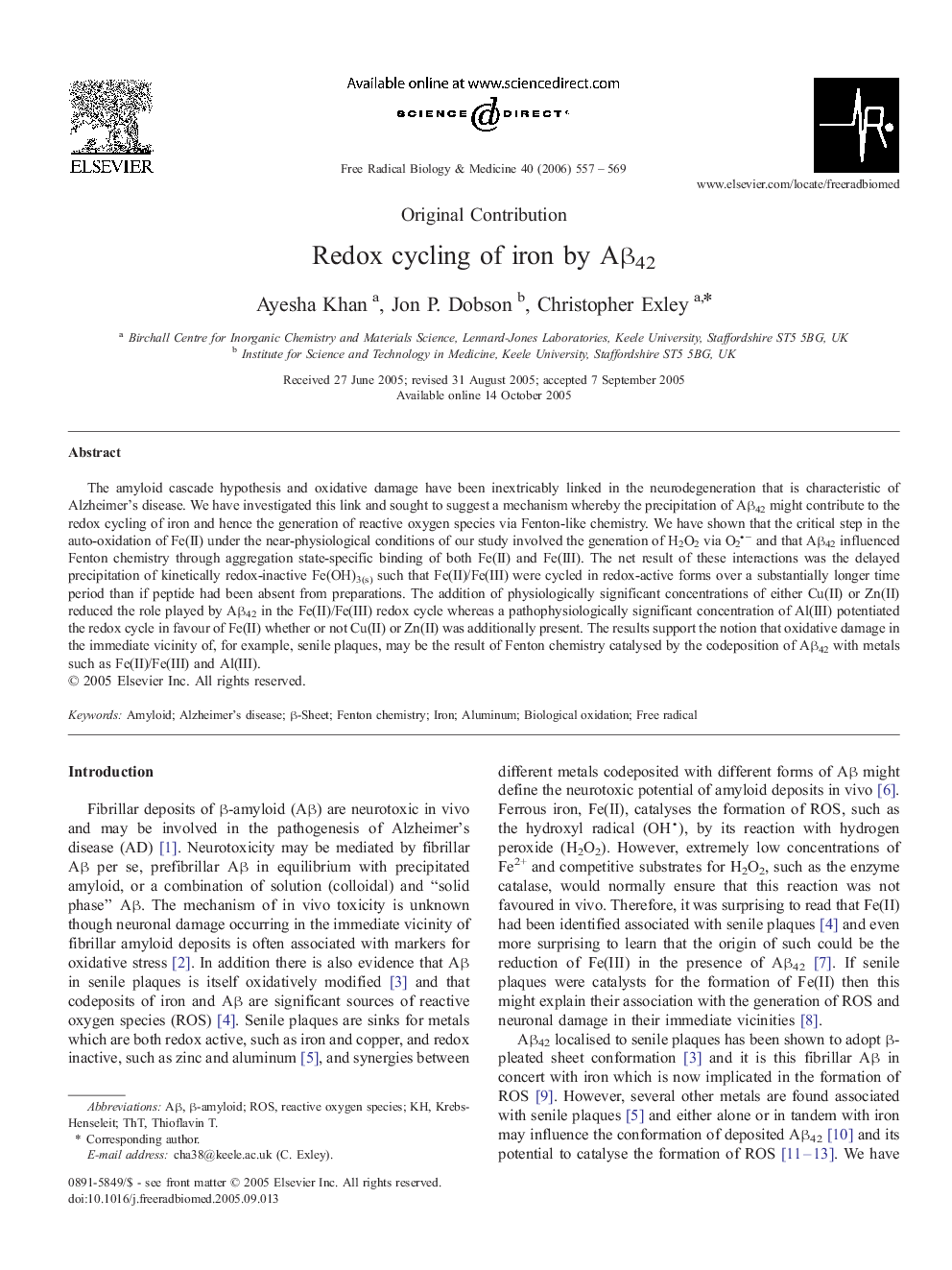| کد مقاله | کد نشریه | سال انتشار | مقاله انگلیسی | نسخه تمام متن |
|---|---|---|---|---|
| 1911723 | 1046830 | 2006 | 13 صفحه PDF | دانلود رایگان |

The amyloid cascade hypothesis and oxidative damage have been inextricably linked in the neurodegeneration that is characteristic of Alzheimer’s disease. We have investigated this link and sought to suggest a mechanism whereby the precipitation of Aβ42 might contribute to the redox cycling of iron and hence the generation of reactive oxygen species via Fenton-like chemistry. We have shown that the critical step in the auto-oxidation of Fe(II) under the near-physiological conditions of our study involved the generation of H2O2 via O2− and that Aβ42 influenced Fenton chemistry through aggregation state-specific binding of both Fe(II) and Fe(III). The net result of these interactions was the delayed precipitation of kinetically redox-inactive Fe(OH)3(s) such that Fe(II)/Fe(III) were cycled in redox-active forms over a substantially longer time period than if peptide had been absent from preparations. The addition of physiologically significant concentrations of either Cu(II) or Zn(II) reduced the role played by Aβ42 in the Fe(II)/Fe(III) redox cycle whereas a pathophysiologically significant concentration of Al(III) potentiated the redox cycle in favour of Fe(II) whether or not Cu(II) or Zn(II) was additionally present. The results support the notion that oxidative damage in the immediate vicinity of, for example, senile plaques, may be the result of Fenton chemistry catalysed by the codeposition of Aβ42 with metals such as Fe(II)/Fe(III) and Al(III).
Journal: Free Radical Biology and Medicine - Volume 40, Issue 4, 15 February 2006, Pages 557–569